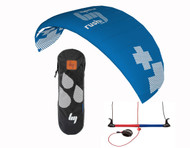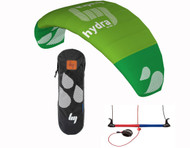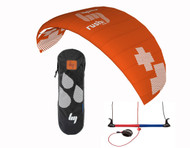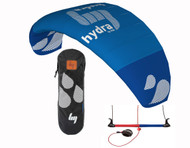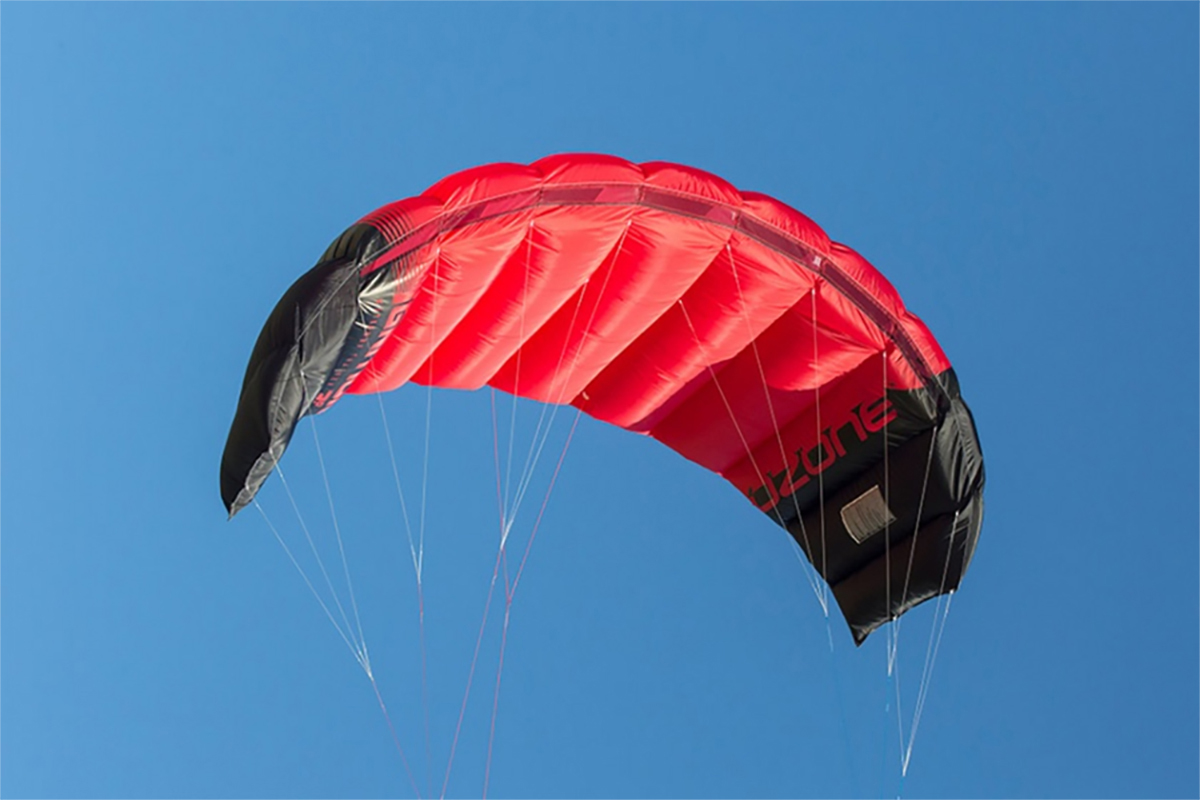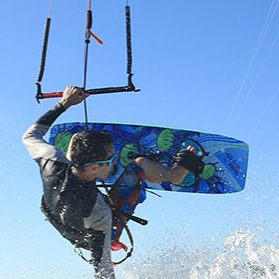
I'm new! I'm looking for a trainer kite...
I'm looking for a beginner, entry-level power kite for...
I'm looking for a board...
- Home
- Trainer Kites
- LEARNING CENTER
- How to Choose a Trainer Kite
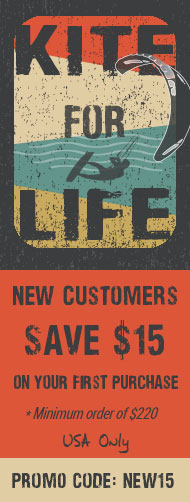
Categories
Shop by Price
Brands
Current Top Sellers
-
$279.00

-
$389.99$379.99
-
$349.99

-
$439.99$435.45
-
$348.50$345.50
How to Choose a Trainer Kite

Choosing the Best Trainer Kite for You
Figuring out what trainer kite would be best for you can be a bit confusing. Here are some tips, along with a guide to help you understand the different types of trainer kites.
Choosing a Trainer Kite: Quick Reference Guide
Land & Snow
|
Land, Snow, & Water
|
Water & Snow
|
4 Questions to Ask When Choosing a Trainer Kite
#1: How will you use the trainer kite?
There are different types of trainer kites, depending on where you want to learn to fly.
- Open cell foil kites can be used on land only.
- Closed cell foil kites can be used on land and water.
- Inflatable kites are great for water.
#2: What type of set up do you want?
Simple & Easy
The majority of people buy a 2 or 3 line trainer kite. These kites are simple to set up, easy to fly, and come complete and ready to fly.
Rig & Fly
These are 4 line kites designed to rig and fly like full size gear. They are more expensive kites that require a harness and a higher skill level. They are more complicated to set up, however, for the right person, 4-line kites can be an effective tool.
#3: What size kite?
Trainer kites come in a variety of sizes, from really small 1.5m, to average size 3m - 4m, to larger 6m kites. Remember the three "W's" when choosing a kite size:
- Wind - How strong are the winds in your area? The stronger the wind, the greater the pull. Strong winds means you may need to consider a smaller kite.
- Weight - How much do you weigh? A lighter person in strong winds should consider smaller kites. Bigger people may choose bigger kites.
- Who - Will you be sharing your kite? Think about the smallest person that will be flying your kite. If you are purchasing a family kite, for safety reasons, you don't want to get too big of a kite.
For example, an average sized guy that weighs 140lbs - 180lbs, flying in winds of 12-20 mph would do well with a 3m or 3.5m kite.
#4: What line configuration?
Trainer kites come in a few different line configurations:
- 2-Line - Easy to set up - Come complete and ready to fly
- 3-Line - Easiest to set up and most popular. Come complete and ready to fly
- 4-Line - Hardest to set up. These are the "Rig & Fly" kites that require a harness hook up.
Most beginners choose a 3-line configuration for ease-of-use, but it depends on what you want.
Popular Trainer Kite Choices
1. Popular Kites
Here are some popular choices, considering an average wind of 12 - 15 mph and using the kite just for training (not learning to snow kite or landboard). These trainer kites are all light to medium pull.
Person weighing 80 lbs to 140 lbs:
- 3 Line Trainer Kites which are the most popular: Rush Pro 250, Rush Pro 300, Ignition 2m, Ignition 2.5m
- 2 Line Trainer Kites: Fluxx 2.2m, Rush 200, Rush 250, Sensei 2m
Person weighing 140 lbs and up:
- 3 Line Trainer Kites which are the most popular: Rush Pro 300 & Rush Pro 350, Ignition 2.5m & Ignition 3m, Hydra 300 & Hydra 350.
- 2 Line Trainer Kites: Rush 250, Sensei 2m & Sensei 3m
The larger sizes. 3m to 3.5m, will produce a strong pull and a very strong pull as winds increase. The Scout is designed to have more power per square meter than any of the other trainer kites.
2. Kids and Friends
Parents who would like to use a trainer kite with kids (80 lbs+) should fly in winds around 10mph. These sizes tend to allow for a stronger pull in a little stronger winds without being too overpowering.
- Most popular size for kids and parents are 2m to 2.5m: Rush Pro 250 and Rush Pro 300, Ozone Ignition 2m and Ozone Ignition 2.5m
- Most popular with other adult friends: Rush Pro 300 and Ozone Ignition 2.5m and Ozone Ignition 3m models
- The Hydra II 300 (2.5m) has been a favorite for families who live close to the beach and want to fly over the water.
- Any less than 2m is very, very small and will produce very little pull.
3. Body Dragging and Learn on Water
- The HQ Hydra 300 and Hydra 350, are the best and most economical water relaunchable trainer kites. With this kite, larger sizes are best for body dragging. If you are 120 lbs or more, the Hydra 300 is a good choice. For 150 lbs and up. the Hydra 350 is the best choice, and for 180 lbs or more, the suggested choice is the Hydra 420 model.
- If your weight is over 180 lbs you need some floatation device as you body drag.
- Inflatable 4 line kites: The React 2m does not have enough power to body drag unless you're a light weight.
- With families, the most popular is the Hydra 300 unless the average wind speed is less than 12 mph.
- Most popular choice is the HQ Hydra 350
4. Snowkiting
A Trainer/Beginner Kite for Snowkiting
- Two ways to go on this one. Buy an inexpensive trainer to learn some basics and then go into the real deal. The other is to buy a big enough trainer (3.5m to 4m) that can give you a pull and will allow you to play around. This is best if you are not totally convinced you want to commit to the investment of the full size gear ($800 to $2000) vs ($300 to $500).
- Popular choices for a larger three line trainer. The best are;
- Peter Lynn Explore 4m. This is a great little package including the Kite, bar, lines, a base harness, and a special third line chicken loop connection to connect to your harness. This is a great way to begin and learn. A couple of other 3 line kites that will give you a pull on hard packed snow would be; The Rush Pro 350, Hydra 350, Hydra420, Skim 350, or Skim 4m.
- Another option is to look into a sheetable kite with good depower. For someone over 140 lbs, a 4m to 8m is a great place to start if your budget allows. $700 to $1,500. If you are serious, about getting into snonwkiting these kites may be a good investement.
The HQ Apex, Flysurfer Viron, or a Flysurfer Peak are fantastic entry level sheetable kites.
5. Landboarding
A Trainer/Beginner Kite for Landboarding
- Trainer Kites are also great beginner kites for landboarding. Any size 2m up 3.5m (true size in square meters) will work on hard packed dirt or pavement.
- When on grass or wet sand you may need to go up to a 3m to 5m training kite depending on wind conditions and weight.
- Full size sheetable kites are the best fit for really learning this sport. Like snowkiting, if you are serious these are good kites to begin with: The sHQ Apex, Flysurfer Viron, or a Flysurfer Peak are fantastic entry level sheetable kites.
 Loading... Please wait...
Loading... Please wait...



